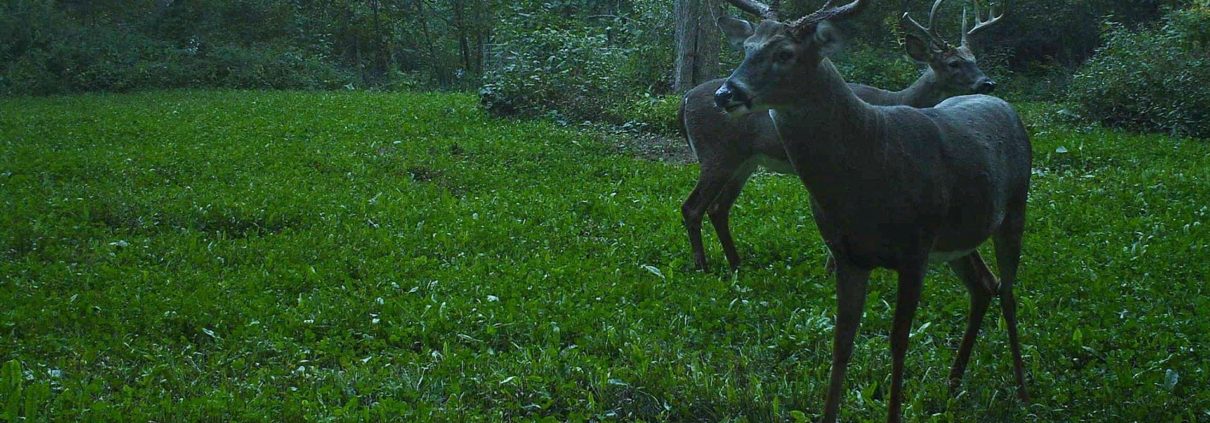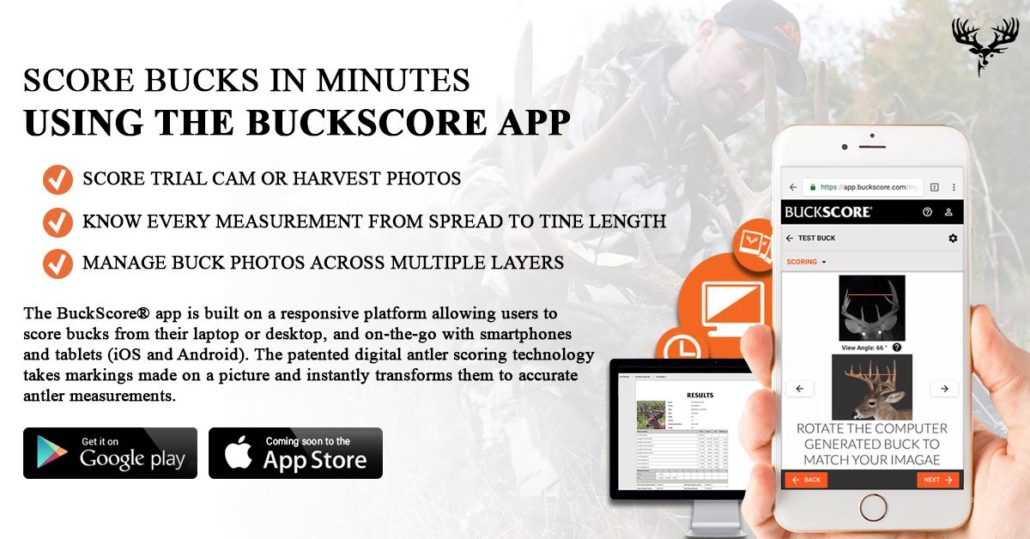CWD Baiting Bans | Attracting Deer to Your Trail Cameras Without Bait
Trail Camera Tips for Attracting Deer without Bait
By: Eric Michel, Wildlife Biologist
Chronic wasting disease; three words that no deer hunter wants to hear. Yet, more and more deer hunters are dealing with this disease as it continues to spread across the whitetails range. Chronic wasting disease or, CWD, is at the top of the list of concerns for many state wildlife biologists. Why? It’s an always fatal infectious brain disease caused by a prion (misshaped protein) that currently has no cure. Unlike other diseases such as epizootic hemorrhagic disease (EHD), deer do not build up an immunity to CWD and once CWD is found in a herd, it’s there to stay as it spreads among the population through urine, feces and saliva of infected individuals. What’s even more concerning is that CWD is in the same family as mad cow disease and although there hasn’t been any documented cases of CWD leaping the species barrier and infecting humans, agencies such as the World Health Organization and the Centers of Disease Control do not recommend eating meat from CWD infected animals.
Once CWD is found in an area, deer management tends to dramatically change. Everything from harvest regulations to baiting regulations are up for debate and rightfully so. Recent research out of the University of Wisconsin – Madison showed that areas where minerals are placed to help supplement a herd’s nutrition actually serve as a reservoir for the prions that cause CWD and deer can become infected from using these mineral sites. This is bad news for hunters who like to place supplemental minerals or other attractants on their properties to increase the number of pictures they can get with trail cameras. Using some type of attractant with your trail camera can dramatically increase the quantity and quality of photos you are able to get which translates into things like deriving a hit list for the fall or obtaining information like population estimates to help you better understand how many bucks and does you should harvest. So what can you do if you no longer want to use attractants or the use of attractants is now illegal because of the presence of CWD in your area?

Trail Camera Tips and Tactics Without Deer Bait and Minerals
This article will discuss other, more “natural” attractants you can use that will allow you to still get high-quality photos.
Mineral Stumps
Mineral stumps have taken the deer world by force since they were first mentioned by members of the Mississippi State University Deer Lab last year.
https://www.facebook.com/msu.deerlab/videos/840689426090213/
Essentially, mineral stumps occur when harvested trees produce sprouts from their stumps. These sprouts are highly nutritious because the root system is so much larger than the sprouts that they contain increased minerals. Deer tend to flock to mineral stumps and placing a camera on these stumps can produce high-quality photos. So how are mineral stumps different than supplemental mineral that’s placed on the ground? Deer aren’t as likely to consume dirt like they would if they were using attractants that are placed directly on the ground. This is important because prions are directly deposited into the dirt by other deer using the site, which can lead to infecting multiple deer. Additionally, once the leaves are gone from a mineral stump, deer use will dramatically decrease. Other attractants tend to leach into the soil meaning deer will continue to visit those sites long after the attractant is gone.
Mast Trees
Setting up trail cameras on trees that produce hard or soft mast is another great way to get photos of those bucks you’ll be hunting in the fall. Deer will disproportionately feed in areas that are producing and dropping apples, acorns, or persimmons. This is because mast represents a limited resource that isn’t available throughout the year. Acorns are particularly high in fat content which can be crucial to helping deer increase their body fat in preparation for the rut. Even the most mature, nocturnal bucks will eventually hit these food sources before they run out.

Food Plots
Food plots may seem like an obvious choice to place a camera to get pictures. There are a couple of things to keep in mind though when picking a specific food plot and a location within that plot to place your camera. First, think about the size of the plot. Larger food plots can be difficult to capture photos from because deer may have several access points, in turn, decreasing your ability to concentrate deer and get photos of most of the deer using the plot. Obviously, one way to curb this issue is to place your camera on what seems to be the main trail being used by deer or simply use multiple cameras. Another way to increase your ability to concentrate deer into a food plot is to consider the size of the plot itself. Putting a camera in a small “honey-hole” sized plot (usually less than an acre) will increase your ability to cover the entire plot with one or two cameras while still getting quality photos because deer shouldn’t be too far away from your camera.
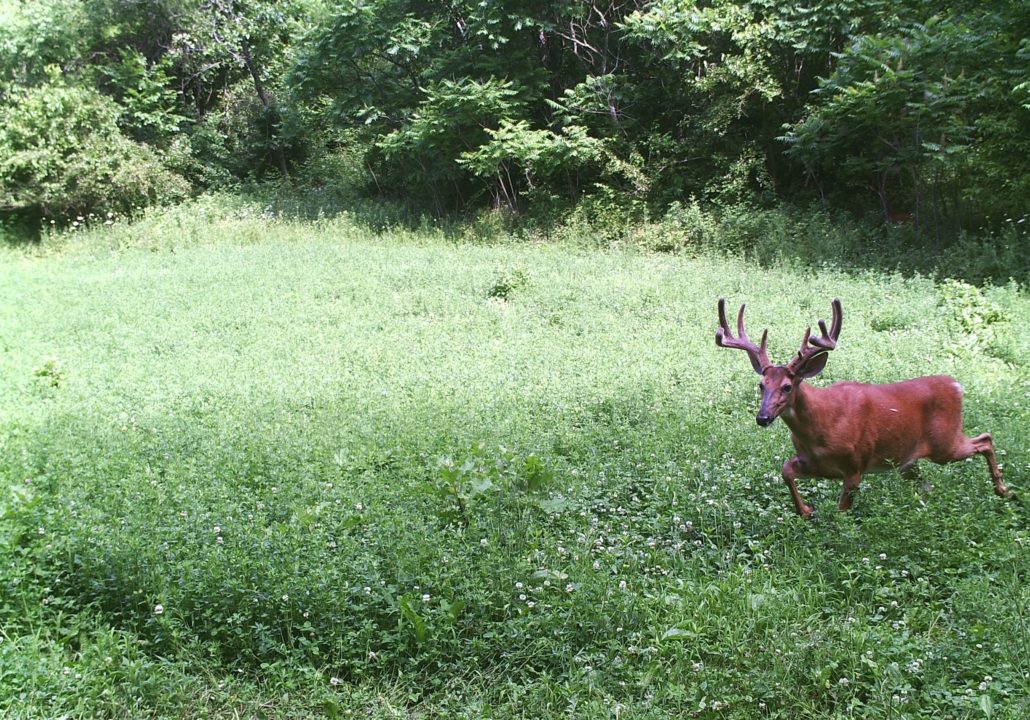
Mock Scrapes
Using mock scrapes can be an extremely effective method to use to get pictures of bucks but there has been some recent controversy with the type of deer urine that you might use in a mock scrape. Several states have banned the use of natural urine because of the potential of it containing CWD prions. Because of this, it is best to use synthetic deer lures just to reduce all potential risk. Additionally, deer urinate at scrape sites, which may potentially infect the site if the deer has CWD, though there is no specific research that shows this. Regardless, using synthetic deer lures to create mock scrapes can be a great way for you to inventory what bucks are using your hunting property.
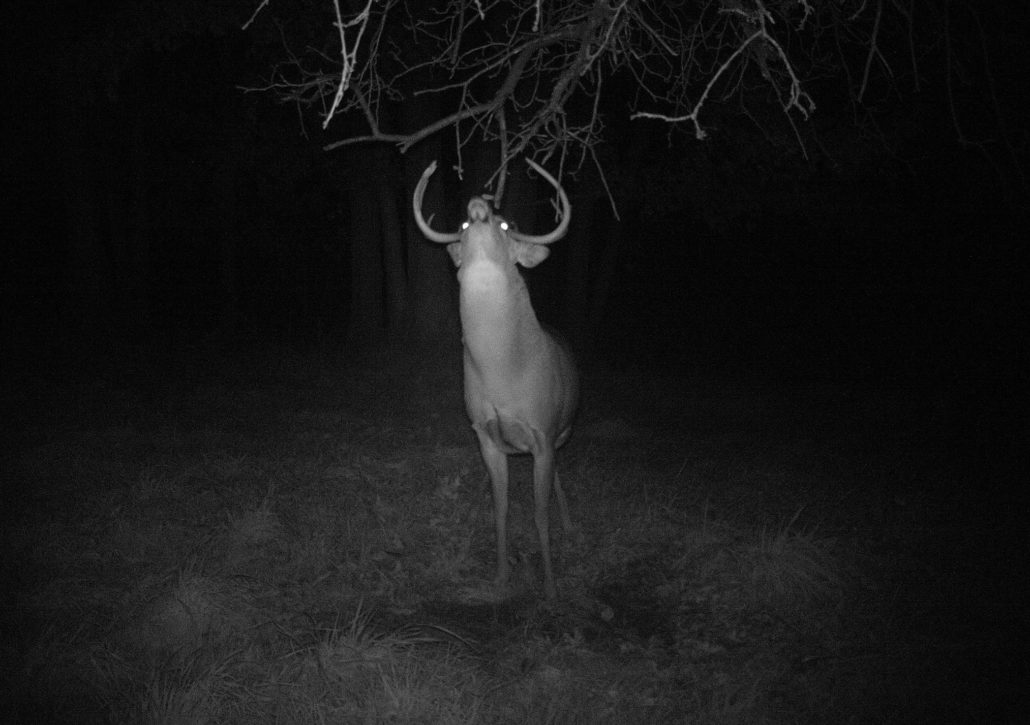
Although all of these more natural methods will undoubtedly help you get pictures of your hit list bucks, research is still needed to address whether these methods are good enough to use when running a trail camera survey or study to estimate things like population size, buck to doe ratios, and fawn recruitment into the population. Regardless, you should give these alternative methods a try if you have CWD in your area or are simply concerned about the potential spread of CWD. You may be surprised at just how well they work!
Have a great hit-list buck on camera? See what he scores with the BuckScore deer scoring app!
